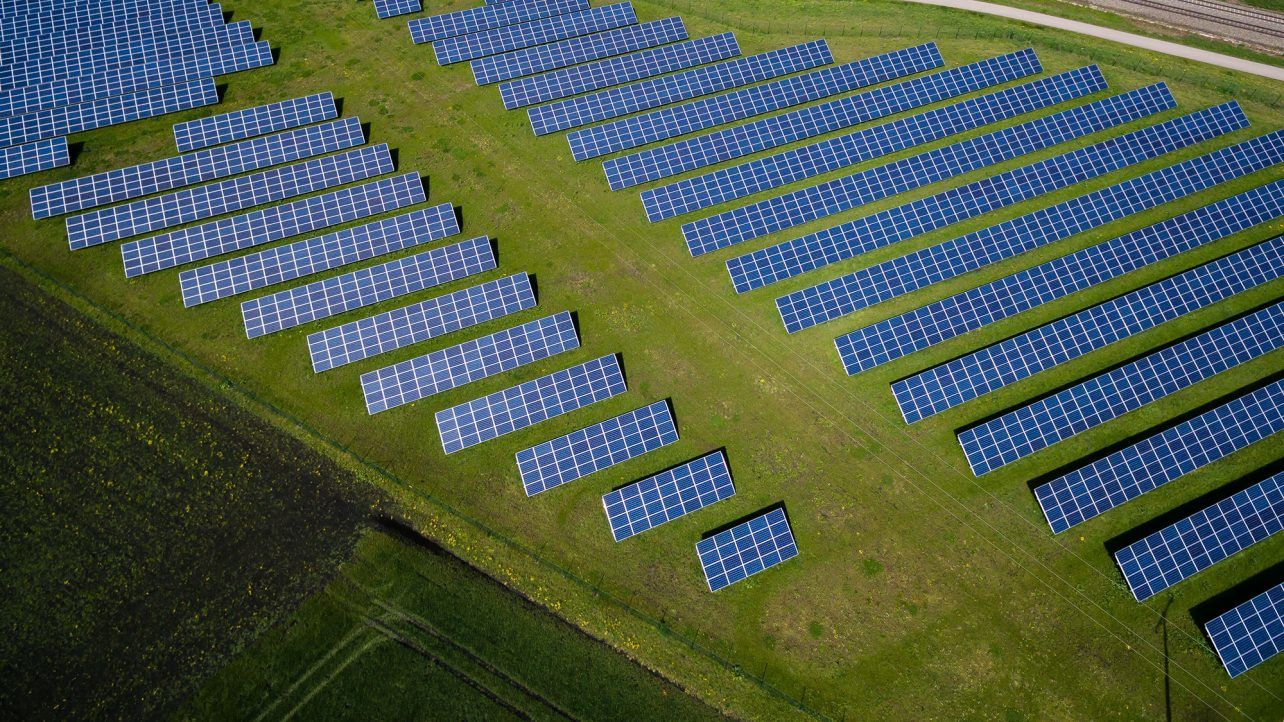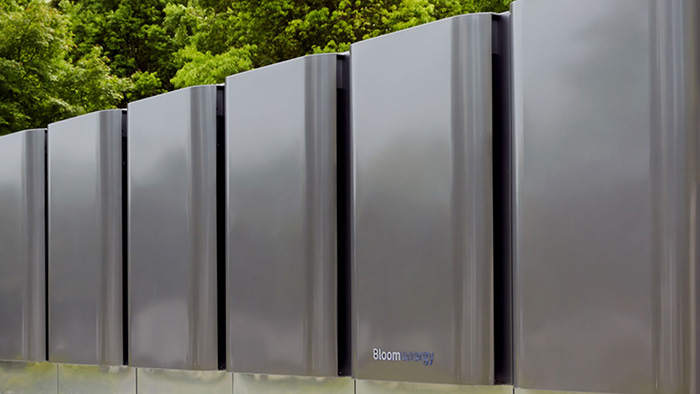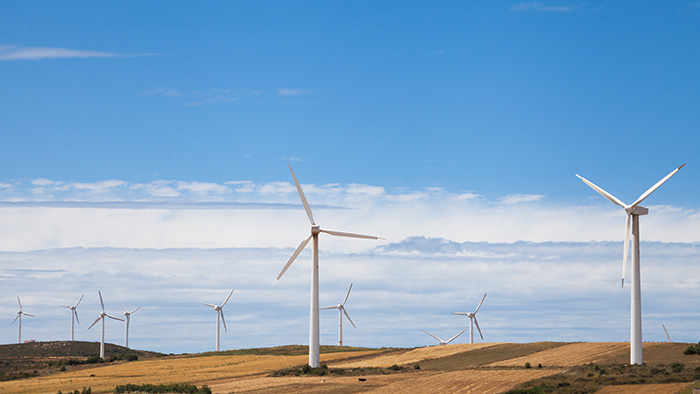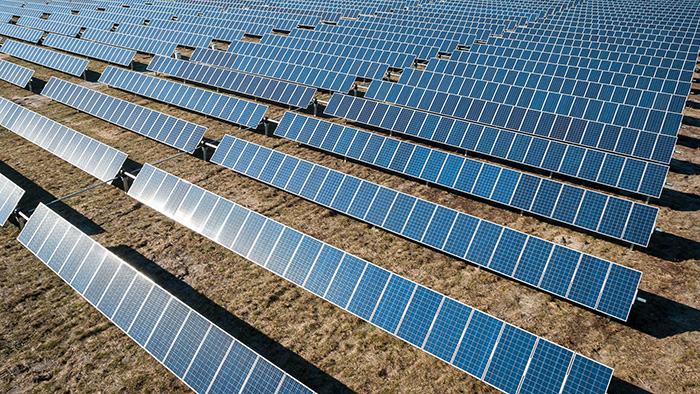Resources
Alternative Energy Report

Why Sustainability?
Sustainability maintains the conditions under which facilities can exist in productive harmony, that permit fulfilling the social, economic, and other requirements of present and future generations. Sustainability is an ongoing and long-term goal, and its execution is implemented over time. As population growth increased up to 46% in some of the major U.S. cities from 2000-2010, sustainability is an issue affecting all.
Changes and increases in urban development, energy use, and physical infrastructure have led to changing standards in facilities and air quality. Lack of sustainability for a facility could lead to loss of energy, inefficiencies of use, potential energy supply disruptions, and over-reliance on outside sources of energy such as foreign oil. Rising costs are a byproduct of the aforementioned sustainability issues.
To combat the changing energy landscape, healthcare facilities need to develop a plan that typically entails a healthy and proper mix of fossil fuels, alternative energy, high performance buildings, and renewable energy. At the end of the day, it comes down to economics. The following financial factors influence the end profitability of a project:
- Rebates
- Tax Incentives and Deductions
- Renewable Energy Credits
- Carbon Credits
- Depreciation
- Operation and Maintenance
Fossil Fuels
Fossil fuels are simple forms of energy from organic matter, consisting of carbon and hydrogen bonds. They require a transportation structure, are carbon intensive, and cause global warming and pollution. Fossil fuels carry environmental setbacks but are highly concentrated sources of heat and energy content.
High Performance Buildings
The last several years has seen a surge in evaluating energy costs. Typically, energy spend was left to facilities management, but due to recent increases, executives are pinpointing utility budgets. As such, all hospital projects are undergoing increased financial review but those aimed at efficiency are being approved. Over the past two years, hospitals have tended to implement safer, low investment strategies with more immediate payback. Average simple payback for energy conservation projects is 3.8 years. Efficiency upgrades include:
- Retrofitting
- Lighting Upgrades
- HVAC Upgrades
- Reprocessing Single-Use Items
- Waste Management
High performance buildings incorporate features of energy, environmental, and economic performance that are substantial improvements over standard construction practices. This strategy uses a whole-building approach with innovative technologies and materials while providing a healthy environment, and efficient energy/material use. High performance buildings, dubbed “green buildings,” cost less to maintain (19%), use less energy (25%), use less water (11%), emit less CO2 (34%), and have higher rates of satisfied occupants (27%). Measurements can be done through the ENERGY STAR® rating program.
Example: Jewish Medical Center, KY
LEED Certified-Silver: Instituted building energy management systems to control artificial lighting, and light sensors. They also use recycled and local products. They instituted flex rooms that can be used for ER, PAT, Med-Surgical applications. 6,502 CCF of natural gas saved per year. 382,611 kWh of electricity saved per year. 220,000 gallons of water saved per year.
Example: Greenwich Hospital, CT
Greenwich hospital had an initial energy star rating of 47, with a 75 rating needed for Energy Star designation. They implemented deep retrofitting which reduced their overall energy use by 35% with less than a 6 month payback. They saved 1.7 million kWh and $303,000 worth of electricity annually. They ended with an energy star rating of 88.
Total cost for all upgrades was $229,476. They received an incentive of $113,239 ending with a net cost of $113,238. Estimated payback was less than six months.
Alternative & Renewable Energy
There are numerous forms of alternative and renewable energy. The key to determining feasibility for each technology is site specific analysis and application.
Renewable energy is a form of energy derived from and replaced rapidly by natural processes. Examples of renewable energies are:
- Solar
- Wind
- Geothermal
- Hydro
- Biomass Power
Renewable energy is carbon neutral and costs are high due to equipment, technology, R&D, and infrastructure construction. However, renewable energy has low fuel costs (if applicable), local availability, and a dedicated infrastructure.
Waste to Energy
The process of waste to energy entails converting biomass to bioenergy. Biomass is all of the earth’s living matter. Bioenergy is the energy derived from the living matter which is recently deceased. Biomass needs to be processed via combustion, chemical treatment or types of catalysts which may be fossil fuels. Waste to energy is a land greedy energy source.
Examples of biomass:
- Wood
- Dung
- Grass
- Straw
- Sugar Cane
- Domestic Waste
- Commercial Waste
- Animal Waste
- Biomedical Waste
Fuel Cell

There are different technologies within the fuel cell community. The technologies vary based on the type of fuel used as well as heat emissions. The three biggest setbacks of fuel cell technology are cost of installation, cost of maintenance, and availability of fuel source (typically hydrogen or natural gas). The efficiency of a fuel cell is typically dependent on the amount of power drawn from the unit. Therefore, drawing more power requires more current which equals greater losses. When the fuel or reactants are hydrogen or oxygen, the reactants need to be recharged or refilled.
Applications for fuel cell technology are:
- Power
- Cogeneration
- Off-Grid Power
- Emergency Power
- Distributed Generation
Benefits of fuel cell systems are consistent production, reliability, and redundancy. Fuel used is also cleaner than traditional power generation sources such as coal.
There are two strategies to finance a project – capital purchase or power purchase agreement (PPA). A capital purchase is an outright purchase of the system for ownership by the facility. A power purchase agreement allows the installer to own, install, operate, and maintain the system onsite. The facility then pays the installer reduced electricity costs cheaper than utility power prices.
Wind

Wind is becoming more mainstream but most use is power generation. A facility would need to be located in a Class 4 wind rating area, which equals approximately 14 MPH for efficient production. Wind systems are high maintenance and noise is a large objection to city installations.
Solar

Solar thermal and photovoltaic systems (PV) have been around for decades and efficiency upgrades and technological advances have made them the most popular and cost effective forms of renewable energy.
Solar Hot Water Heating System (SHWHS)
A SHWHS does not replace a traditional heating system but augments its usage. The system uses panels to heat a liquid which in turn heats the water.
Solar PV
A solar photovoltaic system is made up of modules or panels of silicon wafers. These modules are combined to form a solar array. The solar array uses visible light waves to produce electricity. Efficiency and energy yield of solar panels are advancing. The solar modules are the most expensive component of the system.
The typical footprint of a 2 kW system is 150 square feet. Therefore, a standard 750 kW solar PV system would require approximately 56,000 square feet of space. Solar also has the lowest maintenance costs of all renewables.
Types of modules include polycrystalline, monocrystalline, cadmium telluride, and thin film. Polycrystalline is slightly less efficient but the most popular due to cheaper costs. Polycrystalline panels are made up of several different blocks of crystal. Monocrystalline panels are made up of one single large crystal. This singular crystal allows for more efficiency but is also more expensive. Monocrystalline panels may also perform better in low light situations. Thin film or amorphous is when the silicon is spread directly onto plates, traditionally stainless steel. Thin film is cheaper to produce but is 40% less efficient than traditional crystalline panels. The advantage to thin film panels is a lighter weight for roof applications that cannot support heavier systems.
Types of installations are grid connected, off-grid, grid-connected with battery backup, and hybrid systems. Solar PV systems can be penetrating ground mounts, penetrating roof mounts, ballasted roof mounts, and most popular – carport.
Example: Kaiser Permanente
Kaiser Pemanente has installed solar PV systems throughout California, Hawaii, and Colorado. Their goal is to install solar at over 100 hospitals nationwide. In 2011, they installed solar at 13 locations with a capacity of 11.3 Mw.
Hydropower

There are numerous applications of hydropower, but typical locations are specific to water abundant areas. Advantages of hydropower include no required fuel (free water), no pollution, low operations and maintenance costs, and reliable and proven technology. The disadvantages are the high investment costs and dependence on naturally sourced water.
Efficiency can be up to 50% with a high head. Tidal power, wave energy, and ocean thermal energy systems are also hydropower technologies that are specific to ocean use.
Geothermal Energy
Geothermal energy can be used for electric production, direct use, and ground source heat pumps.
- Direct Use
- Direct use uses a well to bring hot water up to ground and pipes to flow water where needed. The water is then disposed after cooling off.
- Earth Cooling Tubes
- Air flows through tubes underground and is cooled in the process. Air is then pumped into applicable facility.
- Electric Production
- Capital costs for geothermal electric production are much higher than coal fired or natural gas turbine technologies. Geothermal electric production offers continuous production but can have a short life span if not managed well.
Example: Union College
Union college removed their boiler and underground distribution system to install a new geothermal HVAC system. They used a vertical loop geothermal well field with water source heat pumps. The reduction of natural gas used equated to 18,305 Mcf per year, while electricity reduction measured 1,162,000 kWh per year.
Total annual energy savings of $123,636. Total maintenance savings of $34,368 per year. Total Savings of $158,004 per year.
Hybrid Alternative Systems
The idea of hybrid alternative systems involves the combination of two or more energy conversion devices. The goal is to combine the devices to overcome the limitations inherent in either single use technology. Hybrid systems address the limitations of either technology in terms of fuel flexibility, efficiency, reliability, emissions, and economics. An example of a hybrid alternative system is a solar PV/fuel cell installation, as well as a storage system such as battery or thermal storage.
Example
University of Maryland installed a Combined Heat and Power unit which will save $9 million over a 20 year lifespan. The system will generate approximately 13 million kWh annually.
Storage Systems

There are several ways to store energy for consistent use. Parabolic troughs, two-tank indirect, single tank, and battery storage systems are all used for energy storage. Parabolic troughs and tank storage systems use molten salt or transfer liquids to store energy.
Batteries
Batteries can be used to store energy and power in DC or AC. An energy system would charge the batteries during the day for use at night, such as a solar PV system charging a battery for use at night when the sun has set. However, because storage batteries are deep-cycle they require frequent maintenance. There are lead-acid, zinc bromide, vanadium redox, and sodium sulfur battery storage systems.
The Future of Alternative Energy
- Advances in thin-film PV technology will convert any surface into a solar electric source.
- More efficient and cheaper solar modules.
- Advances in ground heat technology.
- Generators capable of producing electricity from ambient vibrations such as cars on a freeway.
- Carbon nanotubes being developed to produce electricity.
- Development of superconductors that have no friction for electricity transportation.
- Small- and low-speed wind turbines for consumer use.










